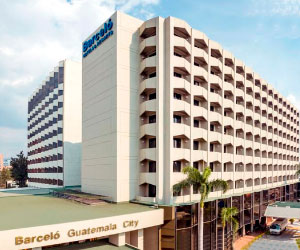The world supply chain is at “its limit” due to events that are becoming cycles, including the effect of the coronavirus pandemic on Chinese ports. The direct consequences in Central America are rising prices for many products and shortages in some, including technological items.
“The (world) logistics sector is very fragile,” Alberto Lopez Tom, the president of the Business Logistics Council (COEL) in Panama, told EFE, his country being – thanks to the Panama Canal – the port of entry and a distribution hub for merchandise for all of Central America as well as some markets in South America and the Caribbean.
After more than two years and within the framework of China’s “zero tolerance” policy, the global Covid-19 pandemic continues to hit the Asian giant’s big ports. The lockdown of the city of Shanghai due to a spike in local Covid cases in recent weeks has hindered the shipment of merchandise from that city’s ports, one of the largest in the world.
And some eight months ago, the partial shutdown of the huge Ningbo-Zhoushan terminal in eastern China caused freight rates for cargo shipments to Central America to skyrocket at the time up to five times what they had been.
“This is an issue that is becoming rather cyclical because the disruptions have not stopped,” including restrictions due to the pandemic in China, and new ones have been arising, including the Russian invasion of Ukraine and the surge in oil prices, Lopez Tom said.
China’s “zero tolerance” policy vis-a-vis the pandemic “is causing serious problems and effects on the logistical chain and we’re going to feel that in Central America in the coming weeks,” with a “rise in freight rates, which will lead to a rise in product prices, and there are also going to be space availability problems on the (cargo) ships.”
The products that will be affected most significantly are end-products, especially technological items, “which can be replaced rapidly only with difficulty because the big (factory) production lines exist only in China.”
“For example, if you’re looking for items like clothing, tires or food, you have alternatives in other places. But you’re not going to be able to get electronic (devices) that only have plants in China,” the COEL president said.
The precipitous rise in fuel prices “are affecting all levels,” and in terms of marine transport “yes, it’s being felt but it’s not as tangible as for ground (transport).”
“The shipping companies in Panama and in other countries, insofar as regards Central American transport, are already making adjustments that weren’t being seen before. An adjustment rate, or surcharge, is being implemented for fuel … because with (shipment) rates that are very rigid, the ground transport from here to Guatemala, to Nicaragua are no longer attractive.”
Given this scenario, Panama, “since it’s the port of entry and distribution” for cargo is – so far – the least affected, but that’s not the case for countries that are at the end of the supply chain, like Honduras and Nicaragua.
“Guatemala receives a lot of cargo via Mexico. I’d say that Nicaragua and Honduras would be the most affected, and some countries in the Caribbean, which are very small markets and which don’t have such an attractive supply chain,” said Lopez Tom.
Panama also has an advantage because, “due to its good connectivity it can also handle cargo from the United States, benefiting from (that country’s) huge purchasing power and cargo volumes,” and even the trade triangle to “other markets like Colombia, Costa Rica and some countries in the Caribbean,” he emphasized.
“I wouldn’t venture to say that this is going to be resolved quickly because unexpected elements arise: a conflict in Ukraine, the increase in fuel (prices) … Who knows what else could happen?” said Lopez Tom.
He said that presently the region is experiencing the lowest freight rates of the year but the trend will be rising soon, not only due to the international environment but also because during the second half of the year the priority is to stockpile merchandise for the big sales in December.
Given this situation, although Panama has good distribution capabilities and many supply chains lead right through the Panama Canal, “there are other places where the supply chain is being delayed,” he said. (EFE)

































